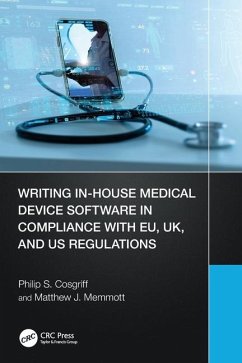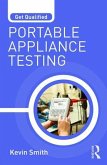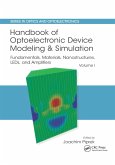Philip S. Cosgriff, Matthew J. Memmott
Writing In-House Medical Device Software in Compliance with EU, UK, and US Regulations
Philip S. Cosgriff, Matthew J. Memmott
Writing In-House Medical Device Software in Compliance with EU, UK, and US Regulations
- Broschiertes Buch
- Merkliste
- Auf die Merkliste
- Bewerten Bewerten
- Teilen
- Produkt teilen
- Produkterinnerung
- Produkterinnerung
This book is a comprehensive guide to producing medical software for routine clinical use.
Andere Kunden interessierten sich auch für
![Metallic Biomaterials Processing and Medical Device Manufacturing Metallic Biomaterials Processing and Medical Device Manufacturing]() Metallic Biomaterials Processing and Medical Device Manufacturing150,99 €
Metallic Biomaterials Processing and Medical Device Manufacturing150,99 €![Transgenic Plants and Beyond Transgenic Plants and Beyond]() Transgenic Plants and Beyond112,99 €
Transgenic Plants and Beyond112,99 €![Get Qualified: Portable Appliance Testing Get Qualified: Portable Appliance Testing]() Kevin Smith (Electrical Trainer and UK Training Manager)Get Qualified: Portable Appliance Testing59,99 €
Kevin Smith (Electrical Trainer and UK Training Manager)Get Qualified: Portable Appliance Testing59,99 €![Building Regulations in Brief Building Regulations in Brief]() Ray Tricker (UK Herne European Consultancy Ltd)Building Regulations in Brief56,99 €
Ray Tricker (UK Herne European Consultancy Ltd)Building Regulations in Brief56,99 €![Handbook of Optoelectronic Device Modeling and Simulation Handbook of Optoelectronic Device Modeling and Simulation]() Handbook of Optoelectronic Device Modeling and Simulation56,99 €
Handbook of Optoelectronic Device Modeling and Simulation56,99 €![Electronics for Scientists Electronics for Scientists]() Daniel SantaviccaElectronics for Scientists40,99 €
Daniel SantaviccaElectronics for Scientists40,99 €![Introduction to Microelectronics to Nanoelectronics Introduction to Microelectronics to Nanoelectronics]() Manoj Kumar Majumder (IIIT, Chhattisgarh, India)Introduction to Microelectronics to Nanoelectronics133,99 €
Manoj Kumar Majumder (IIIT, Chhattisgarh, India)Introduction to Microelectronics to Nanoelectronics133,99 €-
-
-
This book is a comprehensive guide to producing medical software for routine clinical use.
Produktdetails
- Produktdetails
- Verlag: Taylor & Francis Ltd
- Seitenzahl: 278
- Erscheinungstermin: 26. März 2024
- Englisch
- Abmessung: 156mm x 234mm x 17mm
- Gewicht: 510g
- ISBN-13: 9781032293509
- ISBN-10: 1032293500
- Artikelnr.: 69483392
- Verlag: Taylor & Francis Ltd
- Seitenzahl: 278
- Erscheinungstermin: 26. März 2024
- Englisch
- Abmessung: 156mm x 234mm x 17mm
- Gewicht: 510g
- ISBN-13: 9781032293509
- ISBN-10: 1032293500
- Artikelnr.: 69483392
Philip S. Cosgriff worked as a clinical scientist (medical physicist) in the UK National Health Service for nearly 40 years, specialising mainly in nuclear medicine. He produced in-house data analysis software for that whole period, with an emphasis on software quality assurance. He was a UK delegate on a pioneering EU project (COST-B2) on quality assurance of nuclear medicine software, and he has contributed to numerous reports published by the UK Institute of Physics and Engineering in Medicine (IPEM). He retired from the NHS in 2016 but has remained professionally active, with continued contributions to IPEM publications and a chapter in a recently published book entitled Diagnostic Radiology Physics with MATLAB®. He is a recognised expert on the application of EU and US medical device legislation, as well as other consumer protection legislation that may affect the in-house medical software developer. His current interests include the application of AI methodologies to diagnostic imaging and the future role of medical apps. Matthew J. Memmott is a consultant medical physicist based at Manchester University NHS Foundation Trust, with experience working as a clinical scientist in the UK National Health Service for over 15 years. He has previously published journal articles, book chapters and delivered talks at national and international conferences on topics ranging from Monte Carlo image generation, computational phantoms and cardiac positron emission tomography (PET¿CT) optimisation to dosimetry for radiation accident scenarios. He has a long¿standing interest in scientific programming, utilising various languages for analysis and simulation of ground truth quality assurance data; and commercial platforms for the development of in¿house clinical applications. He was a previous Chair of the UK Institute of Physics and Engineering in Medicine (IPEM) Nuclear Medicine Software Quality Group (NMSQG); a group which develops national audits to promote quality standards across departments utilising in¿house developed software, as well as commercial packages. His current interests are in modelling exposure scenarios from radiation accidents, developing ground¿truth computational phantoms for software quality assurance, investigating novel quantitative methods in PET¿CT studies and the potential applications of AI in nuclear medicine.
1. Introduction. 2. The Need for In-House Development of Medical Software.
3. Types of Health Software. 4. Basic Concepts of Risk and Safety. 5.
Standards and Guidelines. 6. Regulation of Medical Devices. 7. Best
Practice and Legal Liability. 8. Security of Medical Devices. 9. Future
Regulation of Medical Device Software. 10. Summary. Index.
3. Types of Health Software. 4. Basic Concepts of Risk and Safety. 5.
Standards and Guidelines. 6. Regulation of Medical Devices. 7. Best
Practice and Legal Liability. 8. Security of Medical Devices. 9. Future
Regulation of Medical Device Software. 10. Summary. Index.
1. Introduction. 2. The Need for In-House Development of Medical Software.
3. Types of Health Software. 4. Basic Concepts of Risk and Safety. 5.
Standards and Guidelines. 6. Regulation of Medical Devices. 7. Best
Practice and Legal Liability. 8. Security of Medical Devices. 9. Future
Regulation of Medical Device Software. 10. Summary. Index.
3. Types of Health Software. 4. Basic Concepts of Risk and Safety. 5.
Standards and Guidelines. 6. Regulation of Medical Devices. 7. Best
Practice and Legal Liability. 8. Security of Medical Devices. 9. Future
Regulation of Medical Device Software. 10. Summary. Index.








